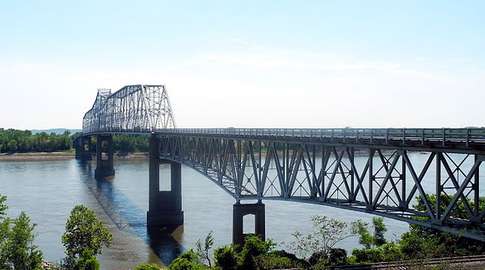Crumbling U.S. Infrastructure is Opportunity for Construction Growth
It’s well understood that in some way or another, U.S. infrastructure—energy, transportation, public safety and buildings—are dependent upon steel for construction and security.
But did you know this?
“There are more deficient bridges in our metropolitan areas than there are McDonald’s restaurants in the entire country.”- James Corless, Director of Transportation for America
Mr. Corless is accurate. There are, in fact, 68,842 deficient U.S. bridges compared to 13,800 McDonald’s restaurants in the U.S.
According to the American Society of Civil Engineers, U.S. infrastructure, including 68,842 bridges, are outdated. Once every four years, the ASCE issues a comprehensive assessment of the nation’s major infrastructure, also known as Report Card For America’s Infrastructure.
The ASCE’s 2013 cumulative GPA for infrastructure rose slightly to a D+. Take a look at the figures:
- America relies on an aging electrical grid and pipeline distribution systems, some of which originated in the 1880s
- One in nine of the nation’s bridges are rated as structurally deficient, while the average age of the nation’s 607,380 bridges is currently 42 years
- Forty-two percent of America’s major urban highways remain congested, costing the economy an estimated $101 billion in wasted time and fuel annually
- The U.S. Army Corps of Engineers estimates that more than 95% (by volume) of overseas trade produced or consumed by the United States moves through our ports. Over $46 billion in capital improvements is needed from now until 2016
- 30 percent of U.S. airport runways are classified as “needing repair,” so nearly a third of our nation’s airport runways will require upgrading
 And while these numbers are jarring, I don’t have to look any further than JMC Steel Group’s headquarters to see the reality. Progress Illinois reports that outdated and deteriorating locks and dams along the Mississippi and Illinois rivers have contributed to a backlog of projects for the U.S. Army Corps of Engineers (USACE), amounting to $60 billion in unfunded, but necessary, upgrades.
And while these numbers are jarring, I don’t have to look any further than JMC Steel Group’s headquarters to see the reality. Progress Illinois reports that outdated and deteriorating locks and dams along the Mississippi and Illinois rivers have contributed to a backlog of projects for the U.S. Army Corps of Engineers (USACE), amounting to $60 billion in unfunded, but necessary, upgrades.
While addressing how to modernize our infrastructure is vital to many interest groups, including politicians and the general public, it’s a particularly important issue for our general contractors, piling contractors, geotechnical and structural engineers, planning deep foundation and structural projects across North America.
What’s even more important, is getting this industry back to work, where utilizing 100 percent domestically produced materials for infrastructure projects can yield a total of 77,000 additional jobs nationally (Source: The Alliance for American Manufacturing). Every family, every community and every business relies on infrastructure to grow and thrive.
So what does the state of our infrastructure mean for contractors? For one thing, government contracts will play a significant role in upcoming opportunities throughout 2013 and even 2014. The entire infrastructure report card presents opportunities associated with infrastructure projects. Taking a deeper dive into this report will help you find opportunities for contracting government bids.
What are your thoughts on the Report Card For America’s Infrastructure? Please post your comments.
